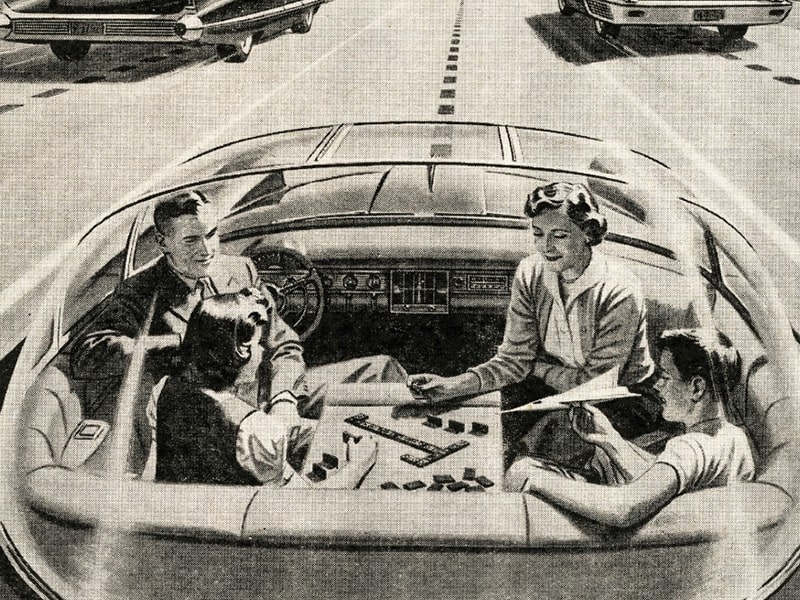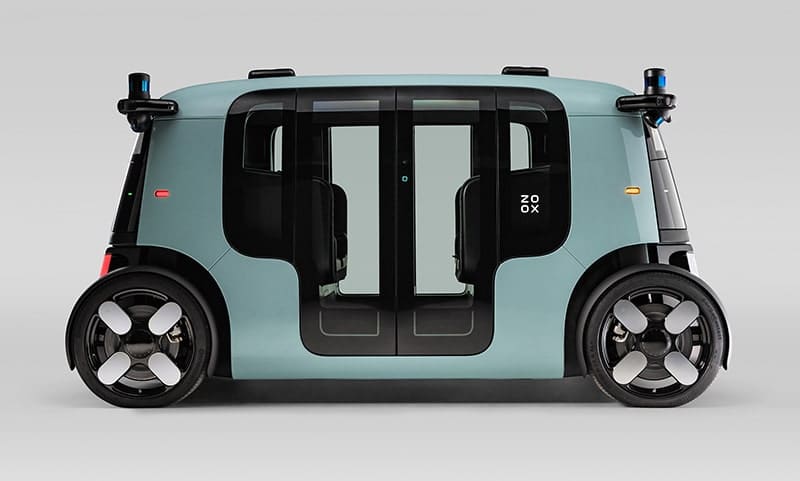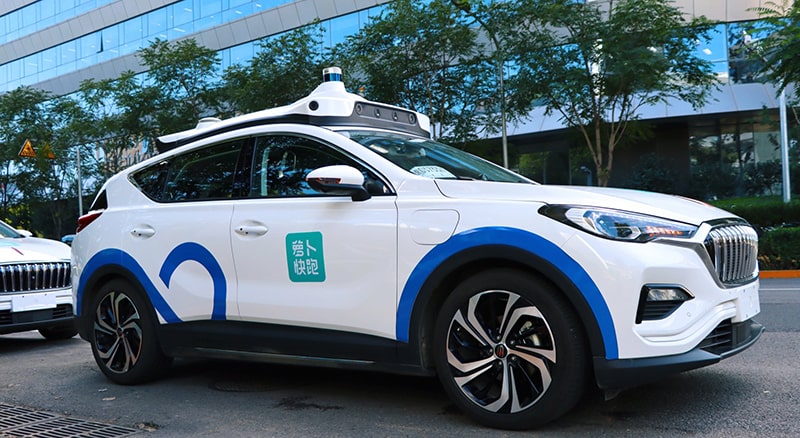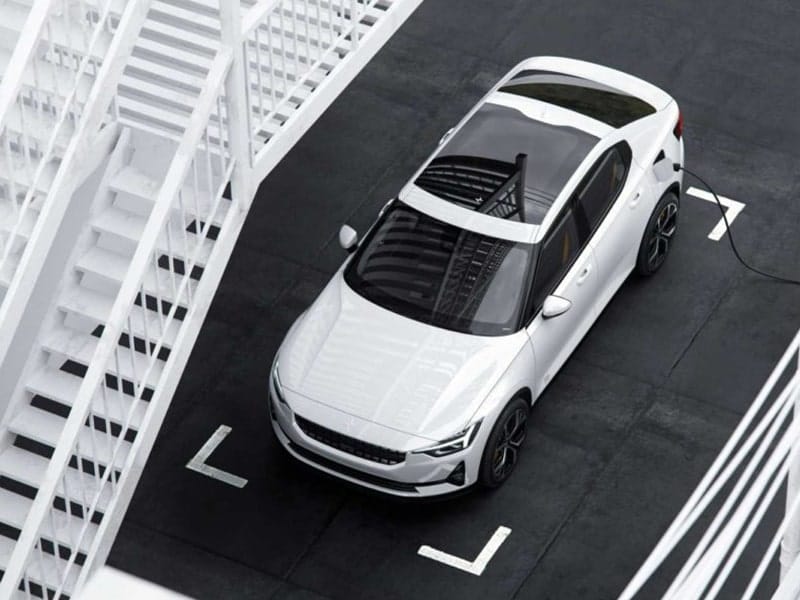
Self-driving as imagined in 1957
Sometimes it takes the right concoction of different innovations coming together at the right time before we can see entirely new ways of doing things. Autonomous vehicles might just be about to have their moment.
In 2006, UK-based game company Mind Candy tested the theory of six degrees of separation as part of an Alternate Reality Game (ARG). They provided a photograph of a man, a name, and the Japanese characters that translate to “Find me”. The identity of Satoshi, the man in question, was revealed in 2020 as advancements in facial recognition, coupled with a life almost entirely migrated online, meant the 14 year search could finally be concluded in a matter of seconds. In 2006 this would have been inconceivable, despite the fact that the internet had existed since 1990 and facial recognition was first pioneered in 1964.
In short it took 56 years for the right concoction of coalescing technologies and behavioural shifts for the search for Satoshi to be both easy, and importantly – not novel. For autonomous vehicles we are experiencing something a little similar, patiently waiting for when AI, deep learning, sensor technology and vehicles are all sufficiently mature to make self-driving a quotidien phenomenon.
2004 marked the first DARPA Grand Challenge which was created to spur the development of fully autonomous ground vehicles, held its first competition on the Mojave Desert along a 150 mile route. None of the vehicles completed the challenge. Fast forward to 2014 and ACES (autonomous, connected, electric and shared) made its way into mainstream automotive lexicon for the first time. One year later Daimler announced its self-driving truck which was cleared to test on US highways and since then we’ve been touting the same safety and human error improvements that autonomy promises.

Fast forward another 7 years and we are somewhere between some very substantial ADAS features (Advanced Driver Assistance Systems) and deep disappointment in the lack of robo-taxi that, knowing precisely the time between finishing brushing our teeth and leaving the house, automatically arrives outside the front door.
Waymo, Cruise and Zoox have possibly led the charge with many others coming and going – including Uber and Lyft’s self-driving subsidiaries. But even the self-driving superstars have not been without criticism of their progress, or scepticism over the staggering amounts of cash they’re consuming. Last year Waymo raised $2.5 billion in its second external investment round and GM gave a $5 billion credit line to Cruise. These astronomical amounts of cash force us to ask is self-driving is even a justifiable expense?

Zoox’s Autonomous Vehicle Concept
I would argue absolutely. Reducing accidents is imperative, and with human error responsible for roughly 90% of traffic accidents – driverless vehicles could be an answer to save us from our dangerous, distracted driving ways.
17 years on from the first DARPA Grand Challenge and there is still a lot of work to be done to get self-driving into the mainstream. We need substantial advancements in neural networks, regulatory environment and public acceptance before we see self-driving as a ubiquitous, safe and cost effective solution.

Baidu’s Level 5 concept
That could of course be with the exception of China’s Baidu who have promised to have self-driving taxis operating in 100 cities in China by 2030. The company’s self-driving subsidiary,
Apollo Go recently revealed it’s level 4 and level 5 concepts and has been operating robo-taxis in Beijing since November 2021.

Baidu’s Robotaxi
Baidu isn’t the only company aiming for driverless cars in China and is joined by AutoX, Deeproute.ai, Didi, Momenta, Pony.ai and WeRide; all of whom have made significant progress over the past 5 years.
When I think about what it would take to make a self-driving car operational in every environment I immediately jump to thinking about the complexity of training a vehicle to operate in the narrow, twisty, twiny tree-lined b-roads in Cornwall in the rain and mud. This is enough to put even the most adept drivers in a tizz, let alone an AI vehicle with a blocked sensor.
China is in many regards the perfect test ground for developing self-driving. Brand new cities with wide, open roads coupled with cities decked out in smart connected technology, couldn’t be more accommodating of self-driving development. Emerging technology is well supported by local and national governments and smart transport is largely considered a priority. There are of course rural villages for whom Baidu might not appear any time soon and there remain challenges with self-driving licensing across different provinces. However, in the interim it’s unsurprising that China can storm ahead in the race for autonomous vehicles
In the Fully Charged Episode – Self-driving Taxis and Buses are already here! Elliot once again offers us a glimpse into a world that’s already living in the future as he experiences Baidu’s self-driving vehicles first hand. It’s crazy to think how much has changed since DARPA first launched its autonomous vehicle challenge, so who knows, one day that sleep pod up the M40 might well be possible!
About the author
Imogen Pierce works in sustainable mobility and future technology for Fully Charged. She is an alumni of electric vehicle startup Arrival where she was Head of City Engagement and Integration working with cities to understand, develop and accelerate their future mobility ambitions. Imogen has also worked in Experience Strategy looking at future technology and mobility trends. Prior to Arrival, Imogen was an aerodynamicist at Jaguar Land Rover before running the company’s technology and innovation communications. She can be found on Medium musing and wittering about sustainable mobility.










